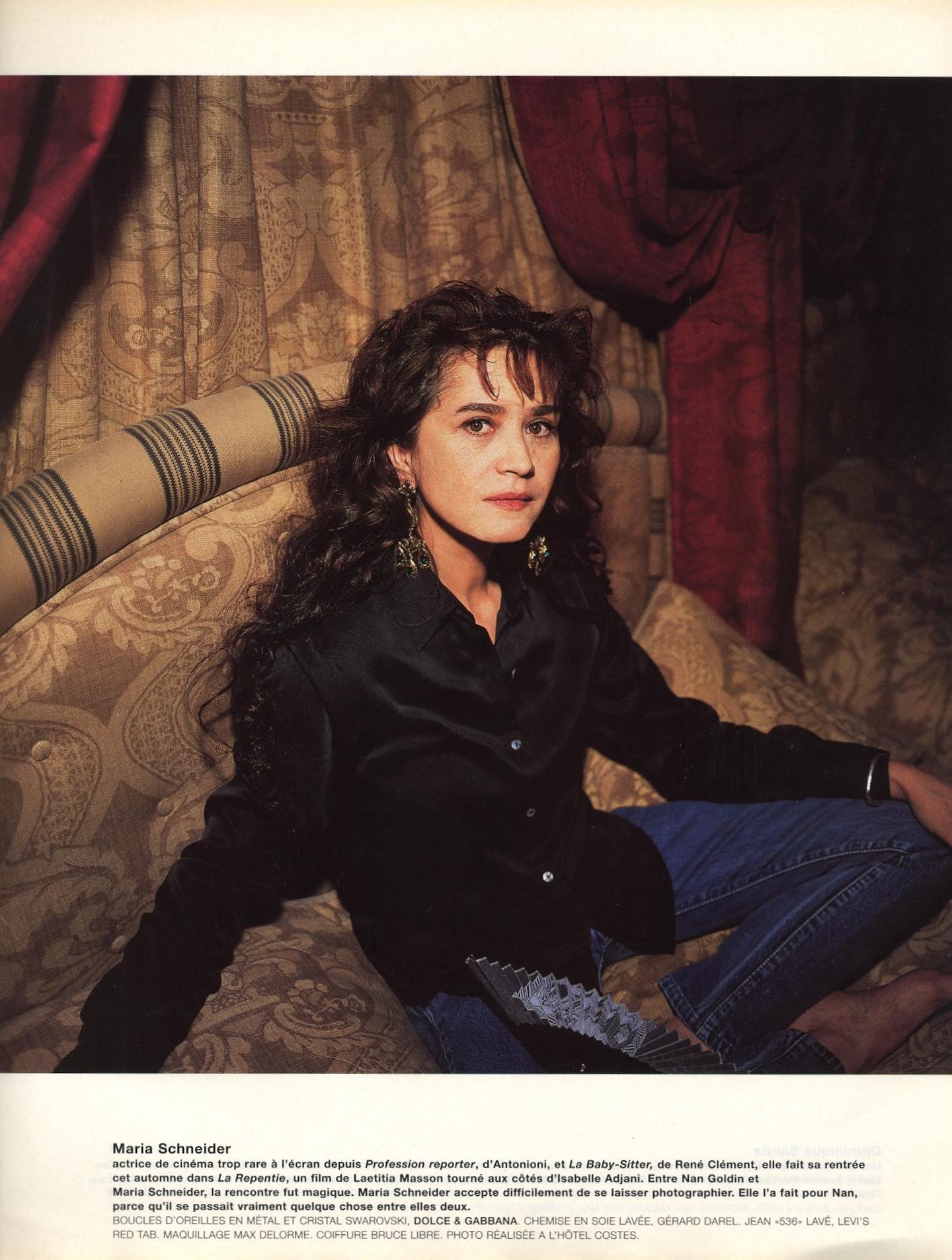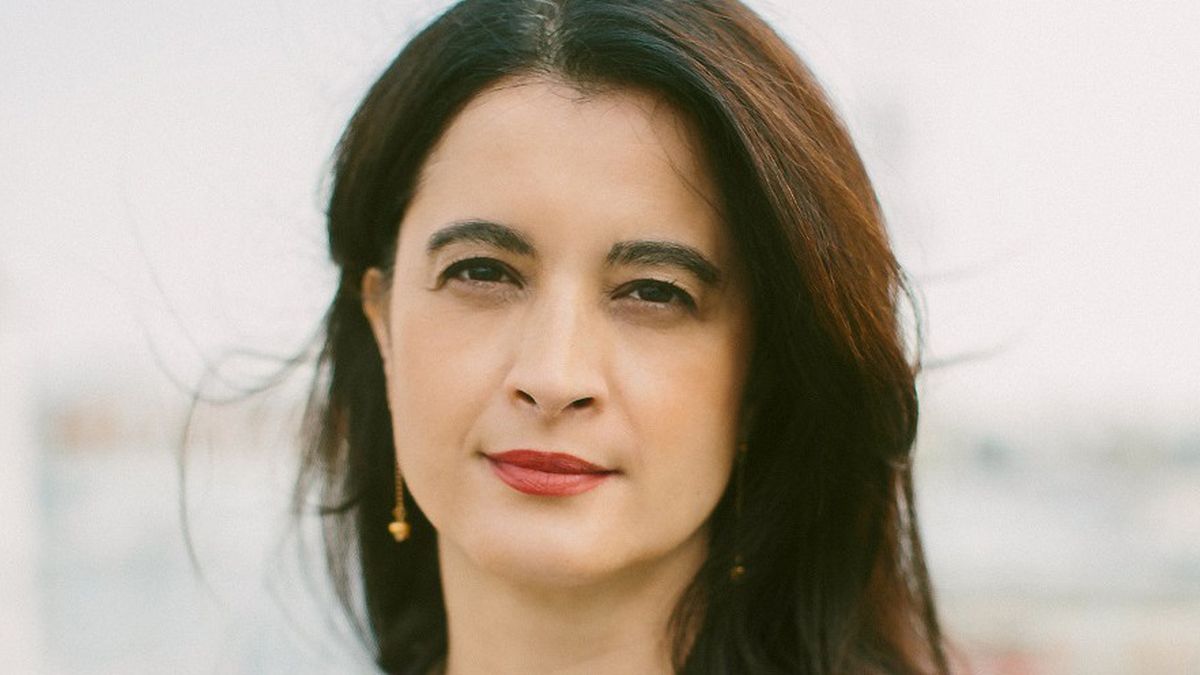Maria Schneider; A Lost Star
Sunday with Hangover
Last night, my friends came over to my place, and we had an incredible time until 1 AM. I prepared Korean food while everyone else brought desserts and drinks. Among the highlights was a fruit punch fountain set up by one friend and another friend introduced his homemade cherry vodka. Combining fruit punch, Bacardi, and the cherry vodka resulted in a perfect cocktail, which we named “Alon” to honor the fountain builder.
It was a nice and cordial gathering but came with an expense, a hangover. Sunday was meant for tackling tasks, just like any other grad student attempting to catch up after procrastinate during the weekend. However, the hangover drained my mental energy, forcing me to spend most of the afternoon in bed. Eventually, I managed a challenging trip to the public library, where I stumbled upon a book among the Librarians’ Picks. Despite my usual hesitation with translated books, this one felt different. The English sentences seemed to capture the French sentiment with precision.
Maria Schneider: An Unknown Name
The book assumed everyone knew Maria Schneider, yet I had never heard of her. Even the notorious film “Last Tango in Paris,” a sensational 70s classic and one of Schneider’s most well-known works, was unfamiliar to me. It could be that the film had been censored in South Korea, where I grew up, leading to limited awareness and discussion. Nonetheless, I was able to deduce that the movie created waves globally, granting Maria fame along with a complex life marked by occasional and random humiliations and stigmatization.

She didn’t want to talk about Tango.
According to the book, Schneider didn’t like being interviewed, and when she had to, she asked the interviewers to refrain from asking about Tango. She wished to avoid revisiting the memory of those scenes due to the brutal working environment she endured. Marlon Brando, a dominant figure in Hollywood and Europe, adhered to strict work hours, while nineteen-year-old Maria was subjected to over 14-hour workdays, seven days a week. She was aware of the nude scenes, but the extent of their brutality was undisclosed.
The infamous “butter” scene, a recurring theme in the book, remained vivid. Maria was unaware of a scene involving sodomy assisted by butter. When Marlon Brando unexpectedly applied butter to her body, she screamed and cried in an attempt to escape the set. Shockingly, Brando and director Bertolucci had conspired to surprise Maria with this scene, filming it despite her distress. The fear and humiliation she experienced were deliberate.
Bertolucci recalled:
“I feel guilty but I do not regret. You know, to make movies is sometime to obtain something. I think that you have to be completely free. I didn’t want Maria to act her humiliation, her rage. I wanted Maria to feel, not to act, the rage and the humiliation.”
A Reckoning in 2016: Her Experience Re-defined as a “Rape”
During the MeToo movement, Bertolucci’s statement gained rightful attention. Female celebrities retweeted his words, expressing disgust and outrage. Maria’s recollection struck a chord: “I should have called my agent. I should have called my lawyer. I should have had them remove the scene. But I was too young to know all that.”
Two influential men in the film industry conspired to humiliate her in the name of artistic expression, for whatever it’s worth. She was told, “It’s all like that. You should know how lucky you are. You were ‘discovered’ as Marlon Brando’s stunning lover character. Other girls would DIE for this opportunity.” When her life unraveled due to drug addiction, they blamed her for not handling fame well. She was enshrined in fame, the entertainment industry’s most valuable currency, yet couldn’t bear the weight of the crown.
I watched a couple of video clips from Tango, and she appeared as a benign, docile actress who spoke English awkwardly. But in the following video, she looked like a mature, cool French woman who doesn’t care much about others’ judgment.
It’s truly disheartening that such a talented young woman, skilled in painting, who would dance through the night, and never be intimidated by famous individuals, gradually succumbed to a world that reduced her to the size of her breasts and trapped her in a role imposed upon her at the age of 19.
Maria Schneider and Nan Goldin
While she didn’t often engage in photoshoots, she did agree to pose for Nan Goldin, who had been commissioned by Vogue. Nan Goldin, a female photographer renowned for capturing the authentic and romantic aspects of individuals in the 60s and 70s, left a profound impact with her realistic work. I’ve always admired the colors, unique angles, and genuine expressions conveyed in her photography. In the photo taken by Nan Goldin, Maria Schneider appears akin to Juliette Binoche—an embodiment of sophistication, artistry, and a sense of enduring fame while still charting her individual path. I speculate that this is the image Maria Schneider aspired to project: a combination of jeans-clad comfort, a sophisticated appearance, and unshakable confidence.

Vanessa, another main figure in this memoir.
This book was written by political journalist Vanessa Schneider. She has been working at Le Monde and Libération, the most influential newspapers in France. She is an “elite” who graduated from Science Po, one of the best schools in Paris, where young souls questioning social values and causes spend their 20s. Vanessa and Maria built a kindship because of the connection between Maria and Vanessa’s father, a young uncle who was like an older brother.
Maria doesn’t have parental figures in her life. Her biological father was a famous movie star Daniel Gelin, who did not recognize her as a daughter. Her mother, who was also young, was unable to care for her, leading to Maria’s being entrusted to a nurse when she was just 10 years old. Vanessa’s parents, referred to as Papa and Maman in the book, stepped in, welcoming Maria into their home until the birth of their own daughter, Vanessa. Financial constraints meant they couldn’t afford a larger apartment that would accommodate both a teenager like Maria and an infant. Consequently, Maria’s life took a homeless turn, eventually finding her living with Bridget Bardot.

Vanessa carried guilt, feeling responsible for Maria’s departure from her sanctuary. The impact of Maria’s fame resonated within Vanessa’s family. Privately, Vanessa felt pride and affection for Maria, but other family members grappled with embarrassment over Maria’s indulgent and spontaneous lifestyle, which was observed by everyone around them. Vanessa’s parents, influenced by socialist ideas inspired by Mao, were financially constrained and donned unconventional clothing reminiscent of gypsies. Moreover, the presence of a sex symbol within their extended family, someone who would sporadically intrude into their lives, disrupt their peace, and then vanish in pursuit of drugs, significantly complicated Vanessa’s mental well-being during her formative years.
Vanessa loved Maria, felt pity for her, and wanted the best for her. She could sense that Maria was a victim of female objectification in the 1970s film industry, even though her own family was somewhat victimized due to her fame. Although I’ve never personally experienced having a famous family member, I could perceive Vanessa’s internal turmoil and admiration. Vanessa’s narrative didn’t shy away from the complex emotions she harbored toward Maria, allowing readers to view her story as a firsthand account of growing up under the influence of a cousin, a recklessly-behaving movie star. This humility and authenticity in Vanessa’s memoir, where she acknowledges her biases and subjectivity, is truly commendable.
So nice to have “A”
“A” is an anonymous same-sex partner of Maria, who stayed with her until her death. “A” was a cinema student when she first met Maria. Proactively, “A” rescued Maria from drug addiction by taking her to Mexico to break ties with drugs and receive proper medication for six months. Maria successfully replaced drugs with “many” cigarettes and champagnes after the treatment, an achievement that no facility in France had managed. I assume that “A”’s constant presence and genuine care made a real impact. Love is giving someone your time.
I wonder if it’s coincidental that talented and successful artists often end up with much younger same-sex partners. Simone de Beauvoir had a partner who was her student and created an archive by deciphering Beauvoir’s incomprehensible handwritten letters and collecting essays from various sources. Oliver Sacks’ partner, Bill Hayes, wrote a book titled “Insomniac City: New York, Oliver, and Me.” The book is a memoir that recounts Hayes’ experiences living in NY and his personal reflections with Oliver Sacks. Hayes himself is a great writer who portrays the relationship with this smart, sensitive, witty, frank, and over 75 neurologist.
These exceptionally intelligent and talented individuals have experienced significant challenges in their lives and somehow found stability with these younger partners who assisted in sorting out their health and work before their passing.
I felt grateful…
I felt gratitude in being surrounded by people who could create a fruit punch fountain, share their stories, and fill the air with laughter. I felt grateful to be living in an era where women are empowered to speak out against unjust objectification. I feel relieved that I know my rights and have people to turn to when facing difficulties. My wish is that all these privileges had been allowed to Maria’s life and would extend to the lives of all women.
